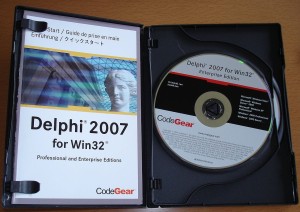June 21, 1948: Manchester Small-Scale Experimental Machine Runs First Program
Subscribe! Spotify | RSS | More

1948 – What was first expected to be a practical use computer, the SSEM, or Small-Scale Experimental Machine became the first stored-program computer. Basically, it stores program instructions into it’s electronic memory. This 32-bit word length, cathode-ray tube computer was designed to only run subtraction and negation through hardware. Other functions could be run, but only through software.
The first program was run on this day. It was written by Professor Tom Kilbum. The seventeen-instruction stored-program took 52 minutes to run. The program was tasked to find the highest proper factor of 218 (262,144).

Subscribe to Day In Tech History:
RSS Feed - iTunes - Android - Spotify - iHeartRadio
Facebook -
- RSS Bandwidth by Cachefly Get a 14 Day Trial
- Join me on Patreon and support Day in Tech History
- Start of the Summer Solstice
- Congress Robot Caucus
- SSEM runs first program
- Final Cut Pro 10 was released to very negative reviews
- Google and Nest Acquire Dropcam

















